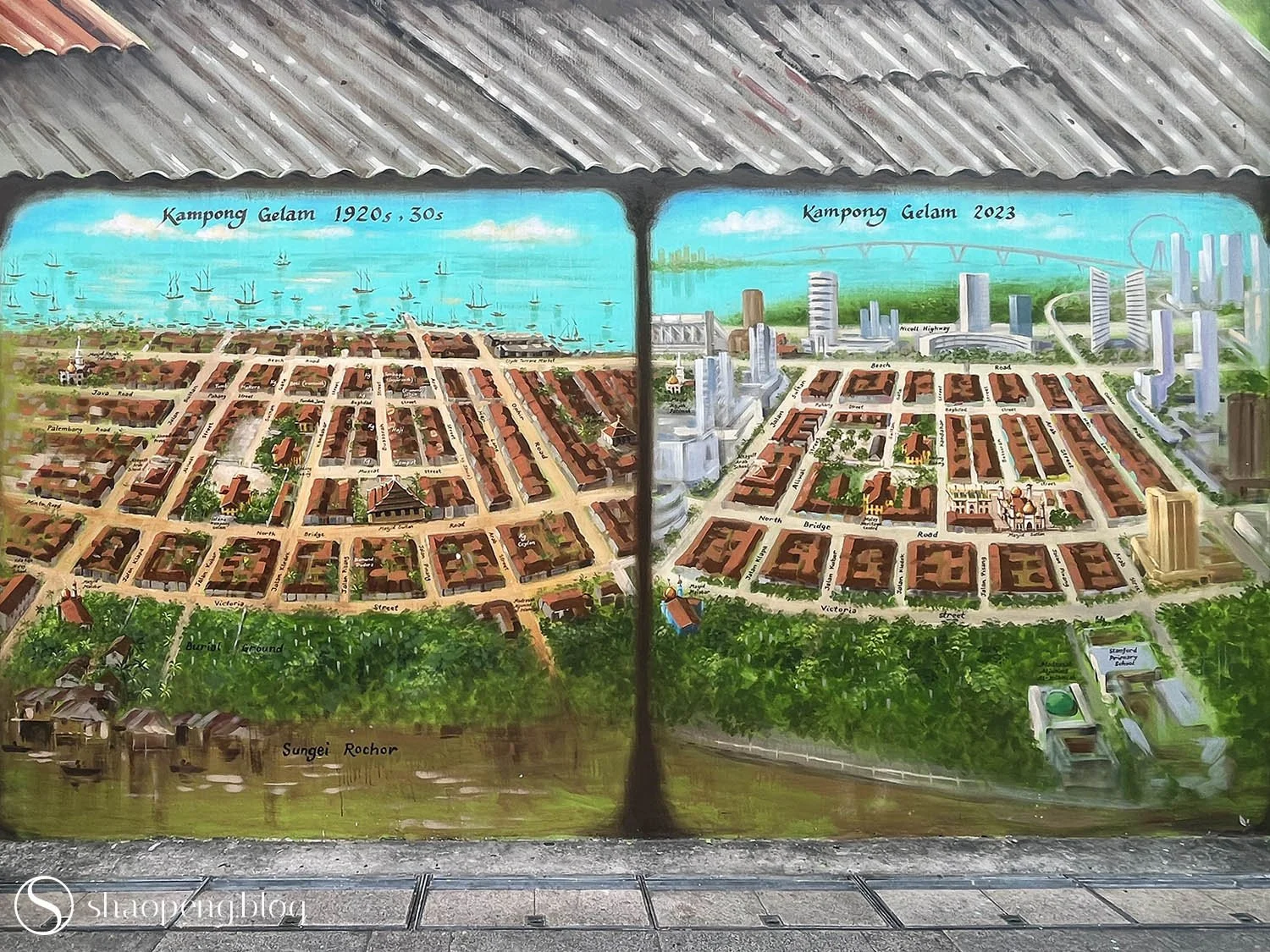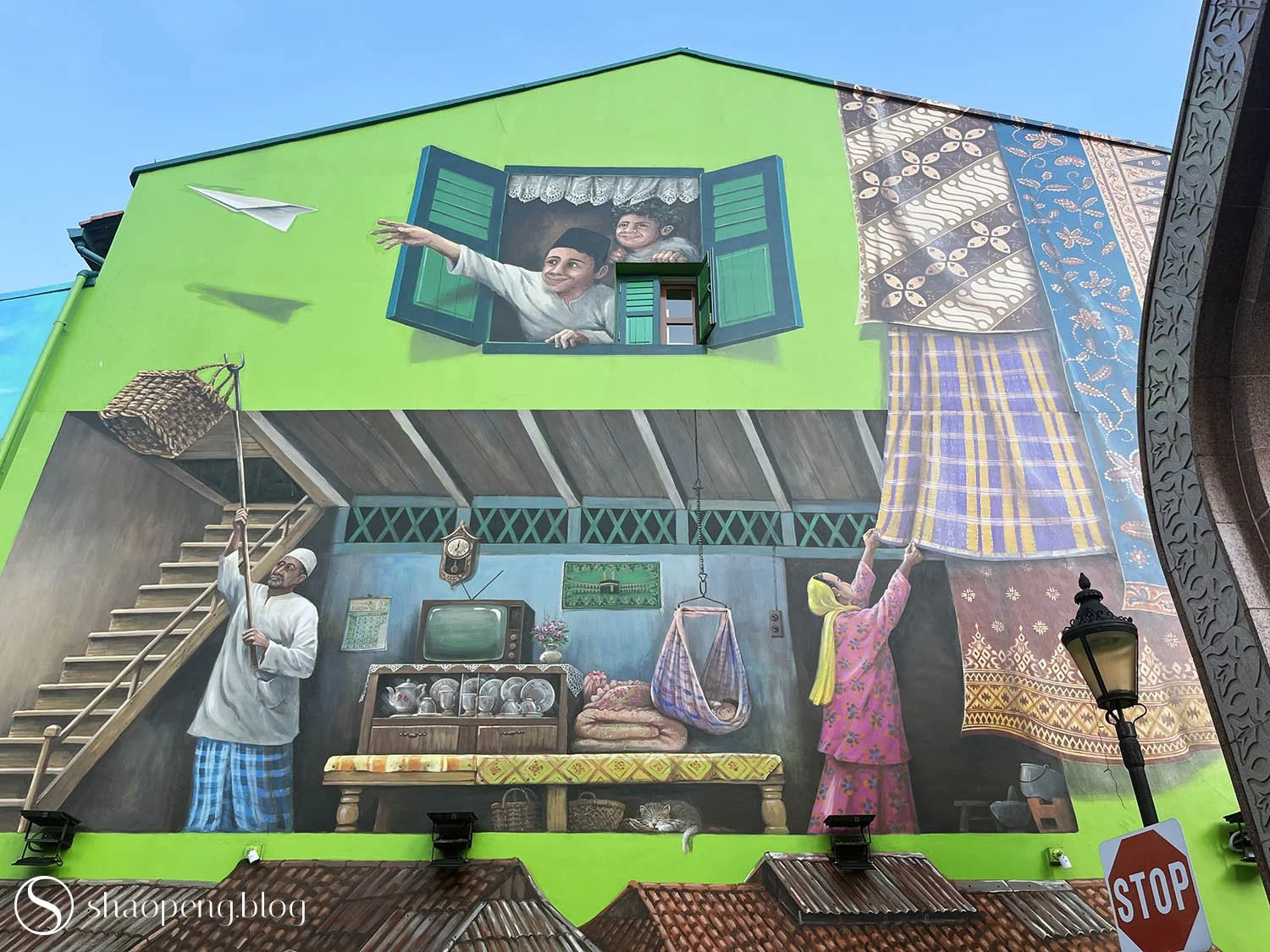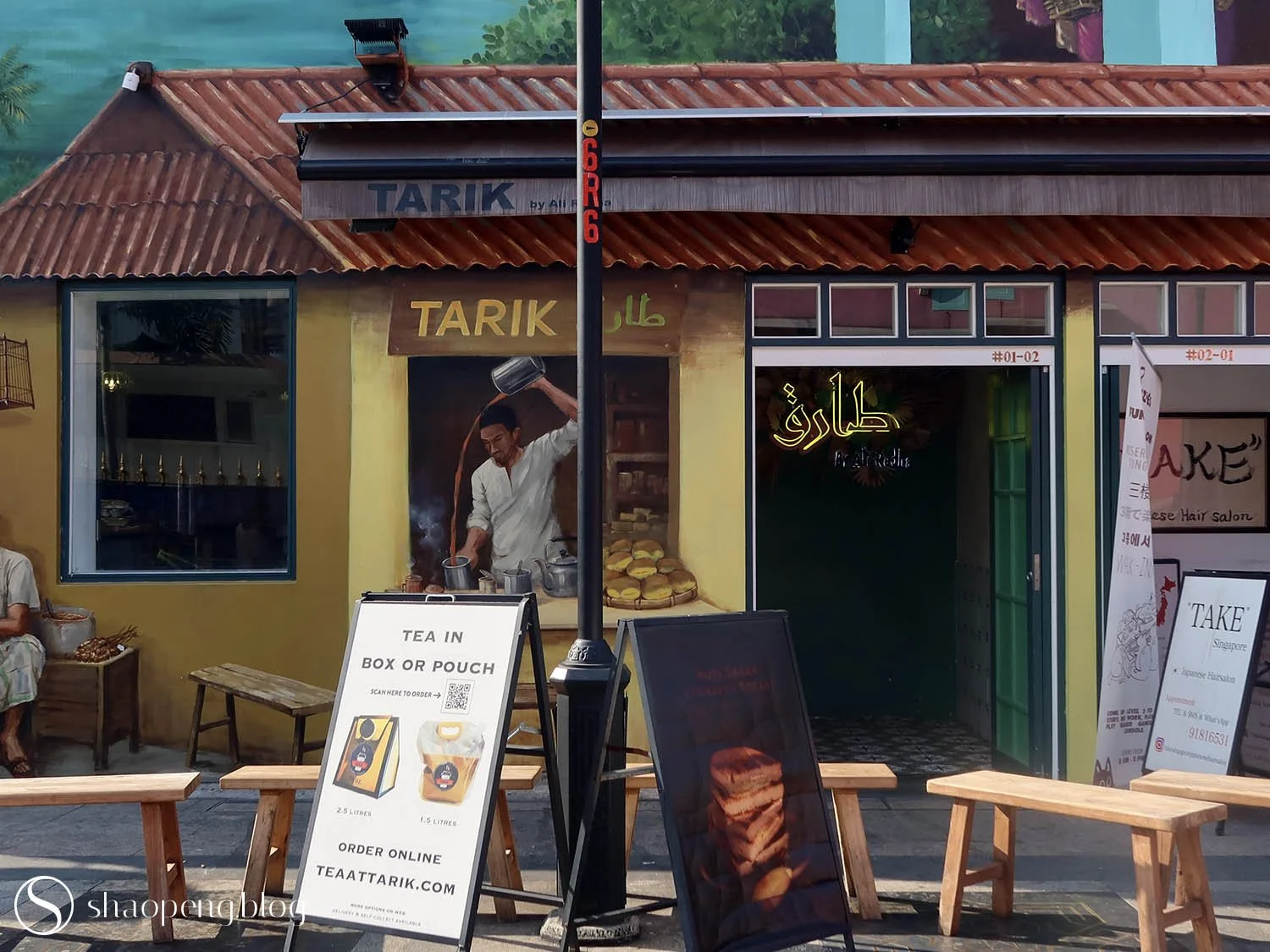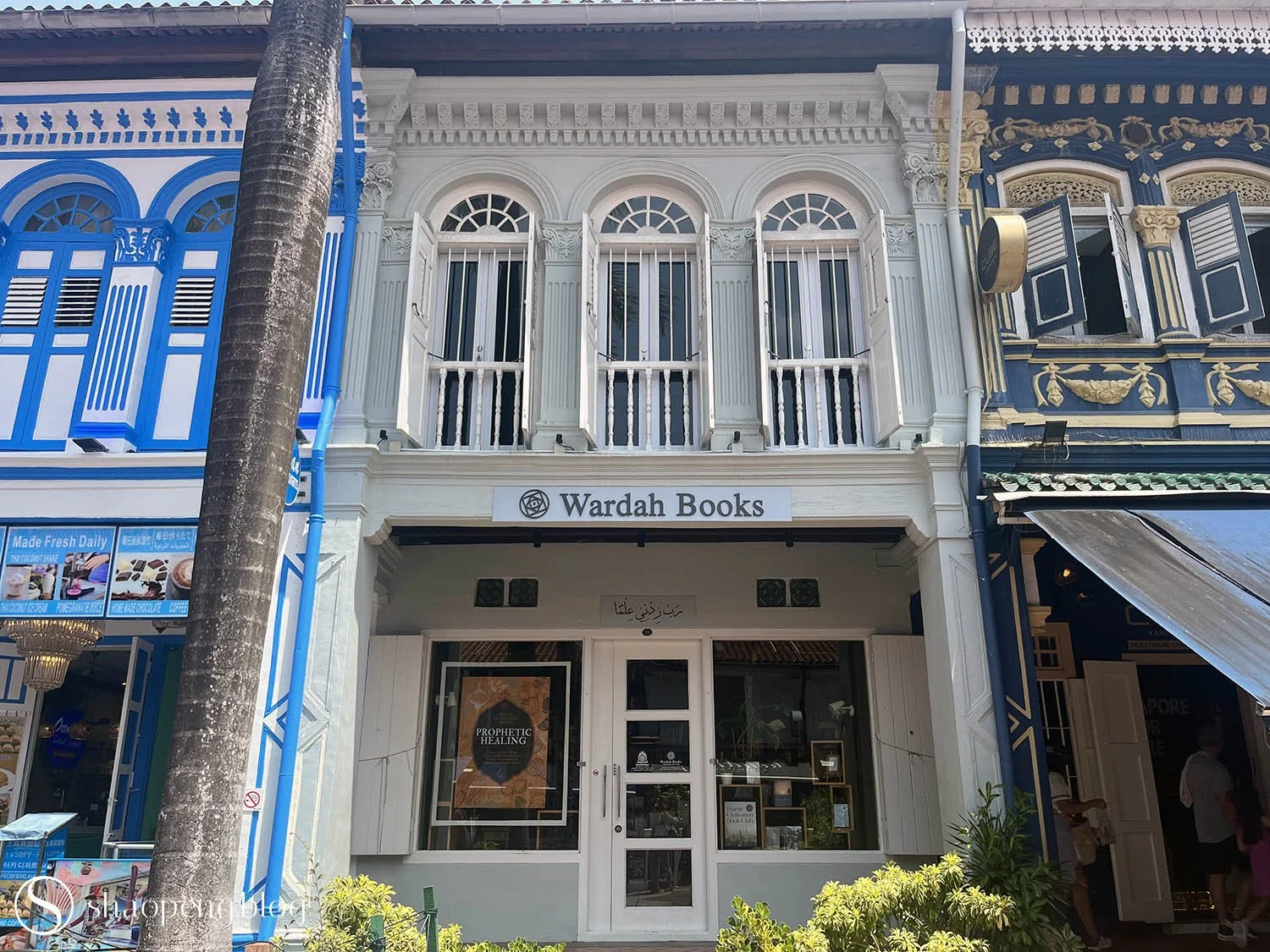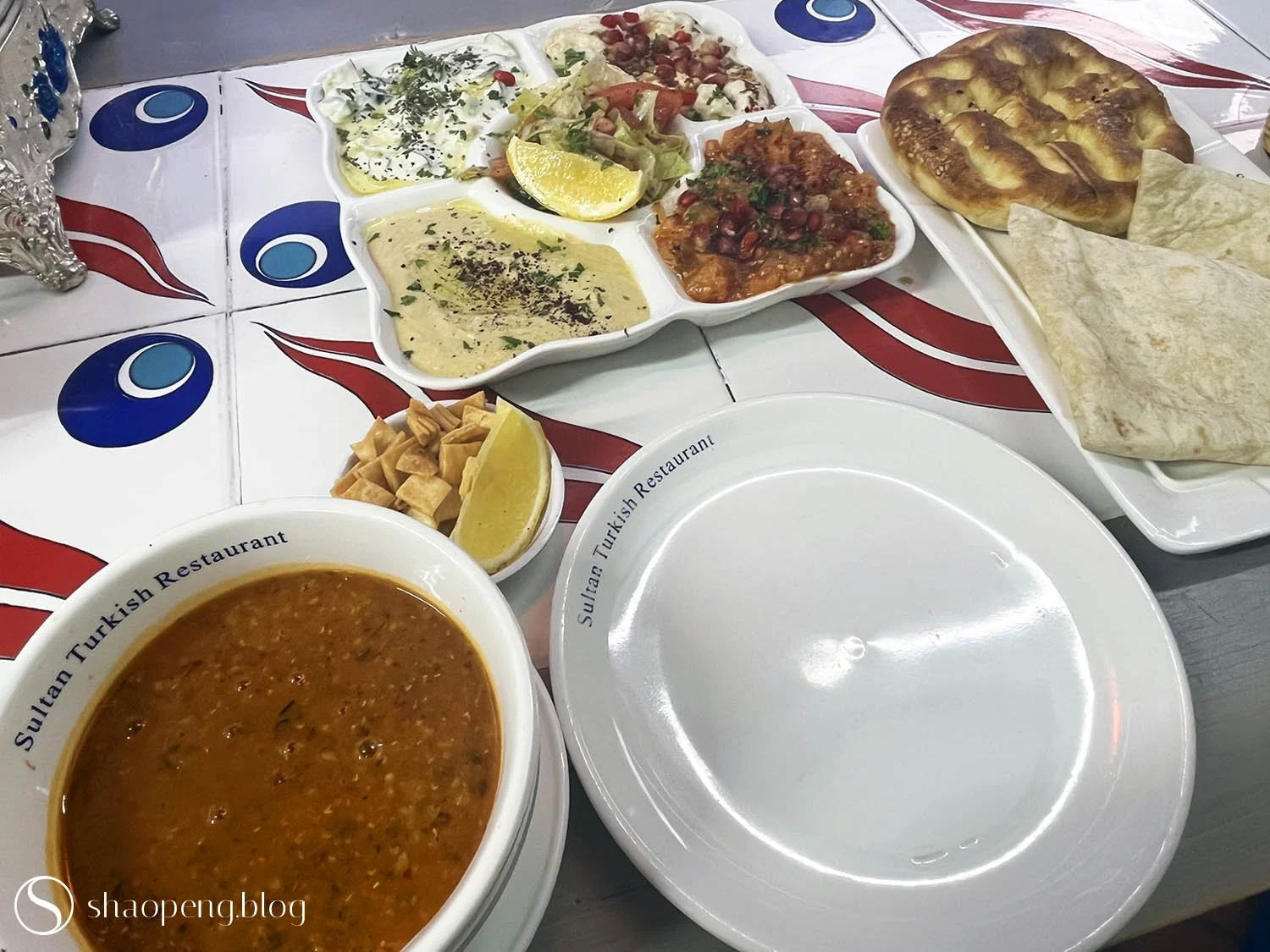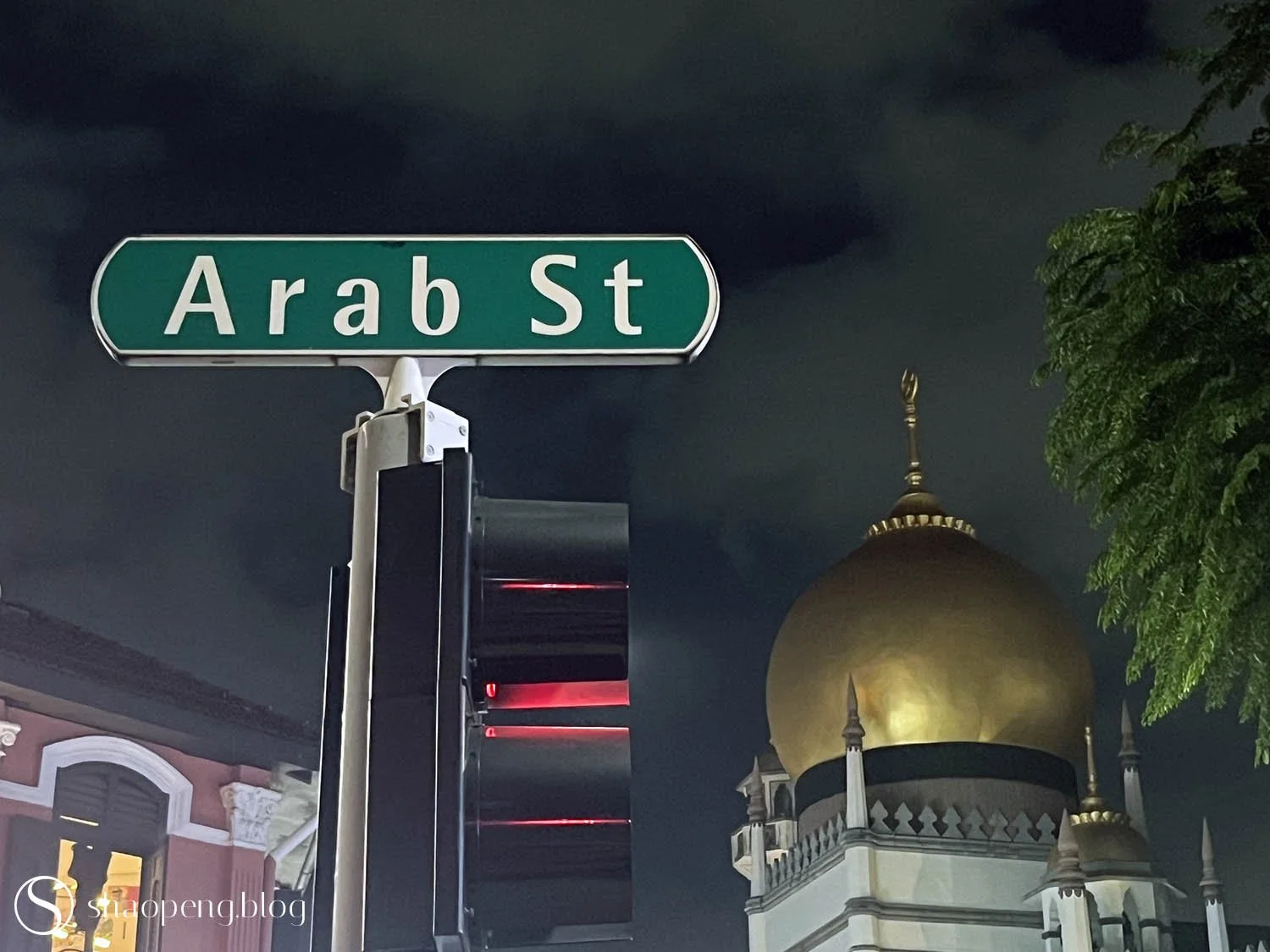Kampong Gelam: Singapore’s Mecca for Cultures
Kampong Gelam, Singapore’s oldest urban quarter, is a rare gem that invites wanderlust-filled souls to immerse themselves in its vibrant multicultural charm.
Sense of Wander: ★★★★☆
Sultan Masjid in Kampong Gelam adds an exotic flair to Singapore’s skyline.
SINGAPORE — A cultural melting pot, Singapore thrives on a blend of Malay, Indonesian, Chinese, and Indian influences, giving rise to iconic neighbourhoods like Little India and Chinatown. But for those yearning to immerse themselves in Arab culture, Kampong Gelam, the Muslim heart of Singapore, is the place to be.
Kampong Gelam, centred on Arab street, is known for Sultan Masjid, one of the largest mosques in Singapore. Crowned with a majestic golden dome and towering minarets, the mosque adds an exotic touch to the cityscape, standing out amid the sleek high-rises that define the island’s skyline.
While wandering in the neighbourhood, you can’t help but be drawn to this historic centre, traditionally home to mosques, carpet shops, perfumeries and Middle Eastern cuisine — all of which can still be found today. This is perhaps why, during my recent trip to Singapore, Kampong Gelam was a place I returned to daily.
A section of a mural by Singaporean artist Yip Yew Chong depicts a comparison between Kampong Gelam in the 1920s-1930s and the present day.
Kampong Gelam is Singapore’s oldest urban quarter and port town, once stretching from Stamford Canal to Sungei Rocher and down to Beach Road.
The area’s origins date back to 1819, when Sir Stamford Raffles forged a treaty with Temenggong Abdul Rahman and the Sultan Hussein (reigned 1819-1835), also known as Sultan of Johor. As part of this agreement, Raffles allocated approximately 23 hectares of land between Rocher River and the sea for the Sultan’s use.
Proximity to the sea helped Kampong Gelam flourish as a vibrant hub, attracting traders and entrepreneurs from across the Malay Archipelago, or today’s Southeast Asia, in the 19th century. The Arabs and Bugis, alongside immigrants from Java, Banjar, Bawean, Sumatra, and the Malay region, settled here in large numbers.
These merchants engaged in various trades, including eateries, rattan, textiles, money exchange, printing, and bookshops. Over time, Chinese and Indian — most of whom were craftsmen — also became part of this bustling community.
This cosmopolitan precinct was named after the Malay word gelam, referring to the white-barked cajeput tree that once thrived in the area. The tree was highly valued for its many uses: its leaves were known for their medicinal qualities, while the bark was used by the Orang Laut — the sea people — to caulk boats and make them watertight.
Painted the side of a shophouse at 92 Arab Street, this mural by Yip Yew Chong offers a rare glimpse into the culture and daily lives of Kampong Gelam’s community in the last century.
While exploring the neighbourhood, you’ll encounter the expansive Kampong Gelam Mural on the side of a shophouse at 92 Arab Street. Painted by Singaporean artist Yip Yew Chong, this mural vividly depicts the area’s history and culture, offering a glimpse into the vibrant, multicultural community of the past.
Arab Street, one of the oldest streets in Kampong Gelam, was established between 1822 and 1824. It was here where Javanese ladies sold flowers, earning it the Tamil name Pikadai Sadakku, meaning “Flower Shop Street,” and the Chinese name Jian-a Koi, meaning “Javanese Street.”
In the area, there were iron and copper smiths who crafted everything from delicate, hair-like needles to hefty anchors. Diamond traders, often from Banjar, sold precious stones and jewellery, while perfumers created bespoke scents tailored to individual preferences. Bookshops and publishers lined the five-footways — a covered walkway typical in the Malay Peninsula, measuring around five feet wide.
Long before the days of air-conditioned malls and online shopping, Kampong Gelam was the go-to destination for premium fabrics and gowns perfect for proms, parties, and galas. It was also where Singapore’s famous satay first took shape, introduced by the Javanese community.







Today, visitors to Kampong Gelam will find Masjid Sultan, also known as Sultan Mosque, standing as the area’s most prominent landmark. This mosque is a stunning example of Indo-Saracenic design, featuring a golden dome that sparkles in both daylight and twilight.
I had the chance to explore the mosque during its limited visiting hours and was immediately enveloped in a sense of tranquility upon entry. The grand prayer hall, adorned with Persian-style carpets and shimmering chandeliers, combined with calligraphy inscribing the words of Allah, creates a profound spiritual ambiance. This speaks to the universal quest for inner peace, whether one is Muslim or not, and highlights the enduring beauty of Islamic art and architecture in Southeast Asia.
Surprisingly, the mosque was designed by Irish architect Denis Santry of Wan and MacLaren. Though it was constructed in the late 1920s, its origins trace back to the 19th century, when Sultan Hussein envisioned a mosque near his residence.
It’s important to point out that Kampong Gelam also served as a key transit point for haj pilgrims journeying from Indonesia and the Malay Peninsula to Mecca. While wandering in the area, I stumbled upon Haji Lane, a street that pays homage to this unique piece of history.
Haji Lane was once home to the Teh Tarik Shop, celebrated for its exceptional teh tarik (pulled tea) and teh halia (ginger tea). What began as a modest kiosk has evolved into a larger establishment, now serving freshly brewed teas around the clock. I particularly enjoyed their Teh Tarik Pandan, where the pandan leaves add a vanilla-like freshness to their signature tea blend.
The storefront of the Teh Tarik Shop seems to emerge from the famous Kampong Gelam Mural in the area.
Teh Tarik Pandan quickly became my favourite drink at Teh Tarik Shop.
Today, Bussorah Street, the main pedestrian thoroughfare in Kampong Gelam, offers subtle hints of its past. Named after the city of Basra in Iraq, this street was once known as Kampong Kaji (Pilgrim Village) and Kampong Tembaga (Copper Village). It leads directly to the entrance of Sultan Masjid and remains a popular spot for tourist photos.
One early morning, as I wandered down the street, now blissfully free of the usual tourist crowds, I saw a couple posing with the mosque as their backdrop. This scene stirred a memory: a photograph from my first visit to Singapore when I was around 10 years old. Standing right here with the mosque behind me, I was wearing my favourite Minnie Mouse t-shirt and shorts, surrounded by the same palm trees that define the tropical setting. The sun shone brightly that day, just as it does today.
Who could have imagined that more than two decades later, I would return to this very spot, experiencing it from an entirely new perspective?
Wardah Books, located at 58 Bussorah Street, is a bookshop dedicated to serving the Muslim community with a curated selection of books.
On Bussorah Street, you can explore a diverse array of Middle Eastern cuisines.
Bussorah Street is lined with carpet shops, perfumeries, and stores selling colourful Turkish lanterns, as well as a variety of restaurants serving a wide selection Middle Eastern cuisine. The street truly comes alive from lunchtime onwards.
As you stroll down the street, you’ll catch the tantalising aroma of Arab dishes and hear waiters chatting in Arabic dialects. The scent of oud, though intended to stay in the perfume bottles, seems to drift out and infuse the air with its exotic fragrance. I picked up a 5 ml pandan-scented perfume from Oudh Madina as a souvenir — believe me, it smells far better than it sounds!
My favourite spot is Wardah Books, a lovely bookshop at 58 Bussorah Street. It specialises in a wide range of books for Muslim readers, covering topics from Islam and Sufism to Islamic art and culture. The first time I visited, I lost track of time, completely absorbed in the rich collection.
The rich history, vibrant culture, and diverse heritage of Kampong Gelam kept drawing me back during my brief stay in Singapore. For me, Kampong Gelam was not just another tourist destination but a living multicultural hub, calling its historical role as a religious, intellectual, and social hotspot for the Malays.
I was excited to explore Kampong Gelam’s rich history and discover more about the Malays at the Malay Heritage Centre, housed in the former Istana Kampong Gelam. Unfortunately, it’s currently closed for renovations and will not reopen until the end of 2025.
While I managed to check off many items on my bucket list this time, a few remain, almost as if they’re calling me back as a pilgrim to explore my passions further in the near future.
Colorful Turkish lanterns light up Kampong Gelam’s streets at night, creating a magical ambience.
Arab street is one of the oldest streets in Kampong Gelam, Singapore.


